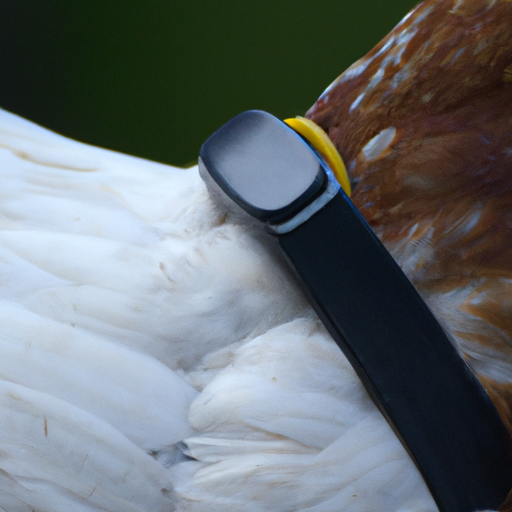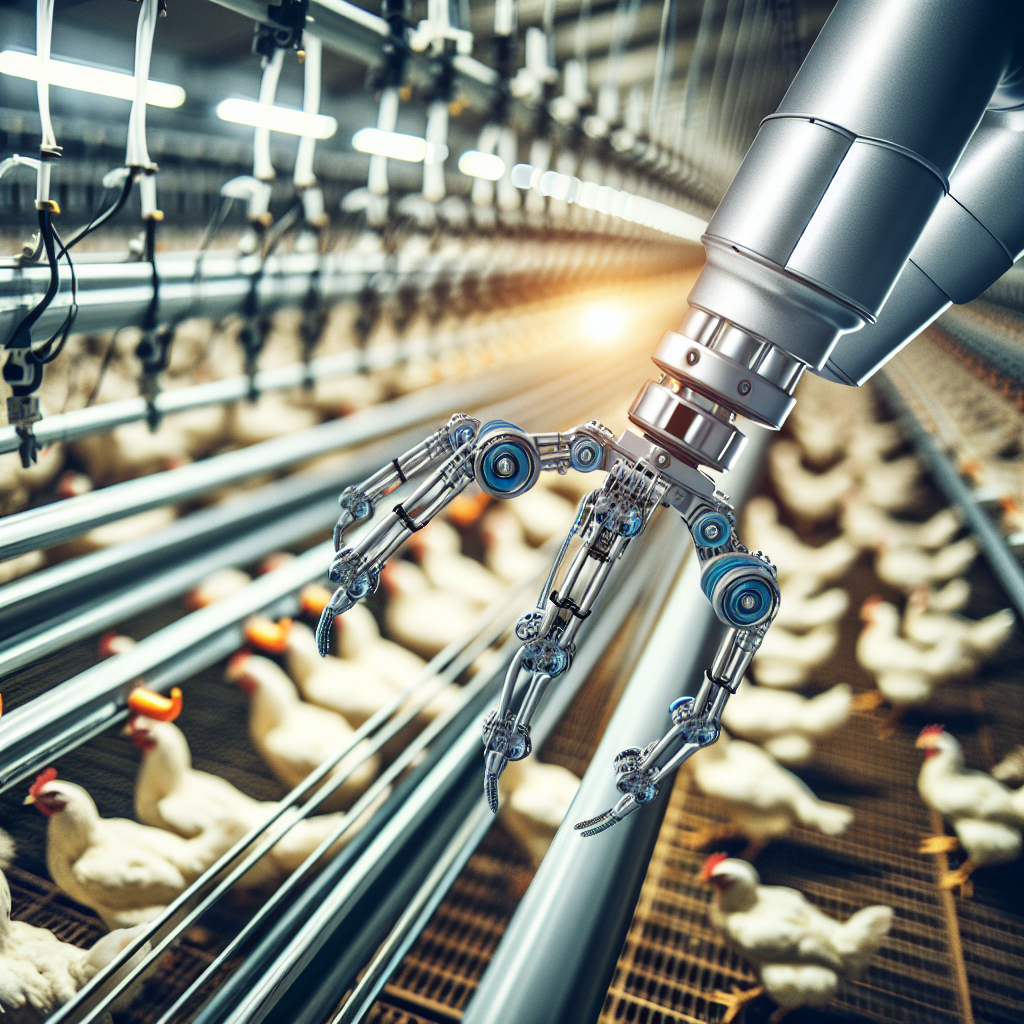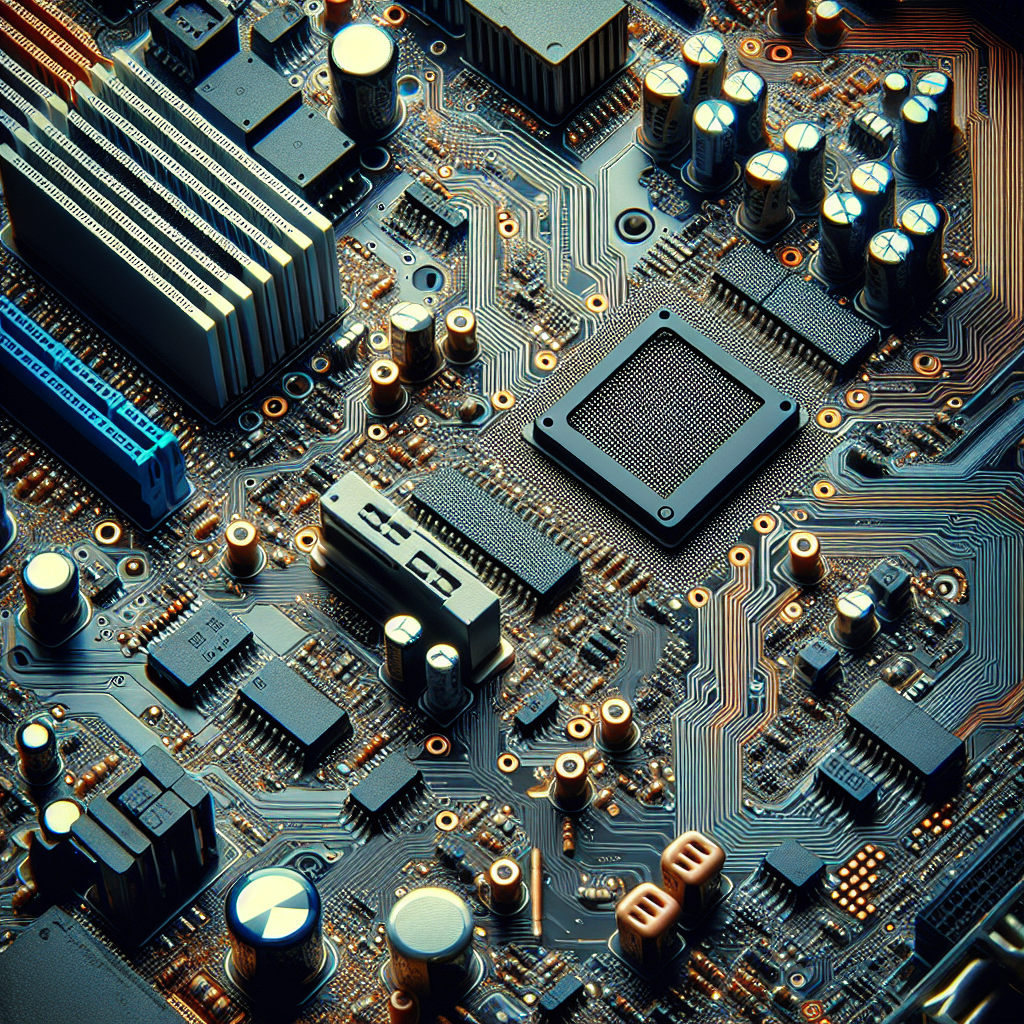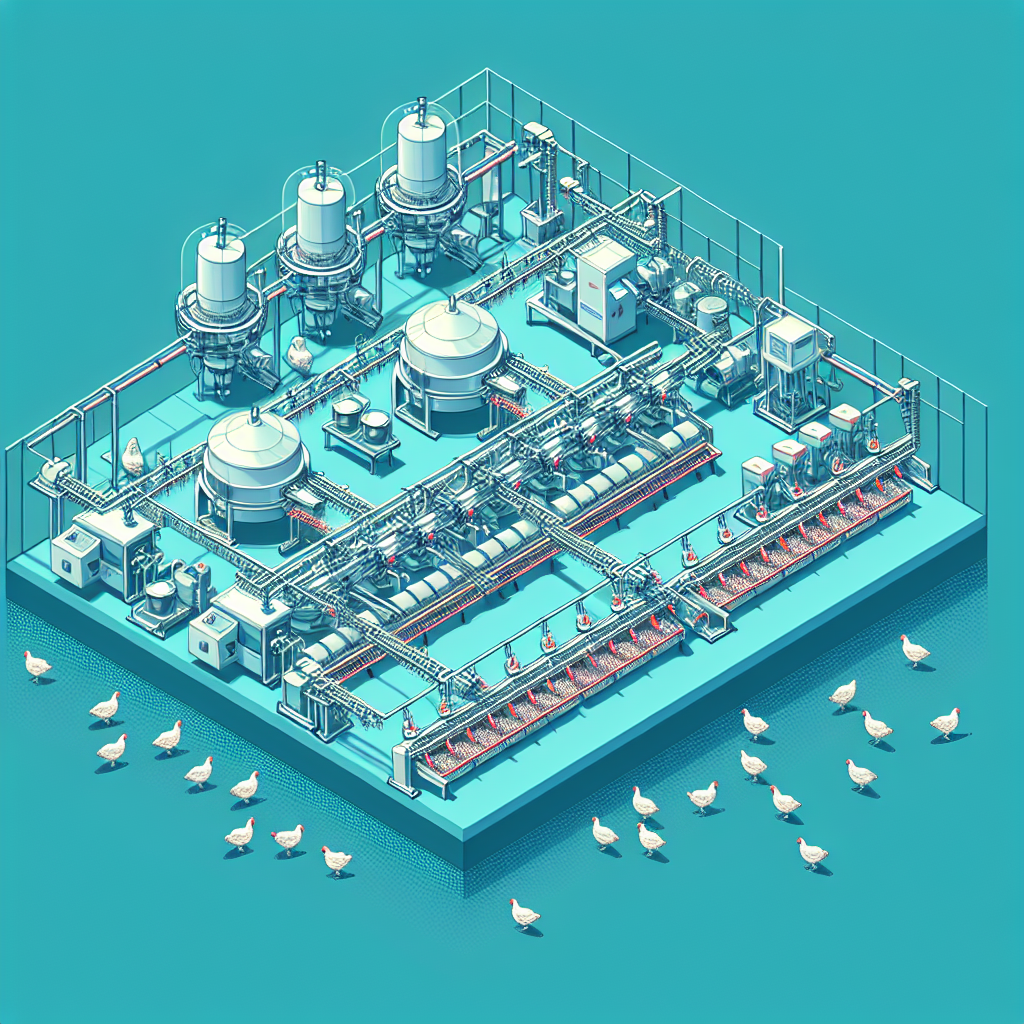Imagine having the ability to effortlessly monitor the health of your flock of chickens from the comfort of your own home. With the rise of technology, this is no longer just a fantasy. In this article, we will explore the top tech tools that can be utilized to closely monitor the health of chickens and detect diseases at their earliest stages. By employing these innovative tools, you can ensure the well-being of your feathery friends and take swift action to prevent the spread of any potential diseases. So, let’s delve into the world of chicken health monitoring and discover the best tools available to keep your flock in pristine condition.
Overview
In recent years, the importance of monitoring chicken health and detecting diseases early has become increasingly crucial in the poultry industry. By ensuring the well-being of your chickens, you can prevent the spread of diseases, minimize economic losses, and maintain a sustainable and healthy flock. However, detecting diseases in chickens can be challenging, especially considering the large numbers of birds in a commercial poultry operation. Luckily, advancements in technology have provided various tools to make monitoring chicken health more efficient and effective. From wearable devices to data analytics, image recognition to veterinary apps, there are a plethora of tech tools available to help you keep your chickens in optimal health.
1. Wearable Devices
GPS tracking devices
Wearable GPS tracking devices are a boon for poultry farmers as they allow for real-time monitoring and geolocation tracking of individual birds. By equipping your chickens with GPS tracking devices, you can effortlessly keep track of their movements, which can become invaluable in preventing theft, monitoring outdoor range usage, and evaluating the effectiveness of free-range farming practices. With this tool, you can identify patterns in bird behavior, assess the impact of environmental factors on their health, and ensure their safety.
Accelerometers
Accelerometers are small devices that monitor and record the movement and activity levels of chickens. By attaching accelerometers to the birds’ legs or wings, you can collect valuable data on their behavior, such as walking, running, and flying. This data can provide insights into their overall health and well-being, as sudden changes in activity levels can indicate potential health issues. By detecting changes in behavior early on, you can intervene promptly and prevent the spread of diseases among your flock.
Temperature sensors
Maintaining the right temperature inside a chicken coop is essential for the well-being of your birds. Temperature sensors, when installed in the coop, continuously monitor and record the temperature levels, ensuring that they remain within a safe and comfortable range. An abnormal increase or decrease in temperature can be an early indication of an underlying health issue or environmental problem. By using temperature sensors, you can take proactive measures to address temperature fluctuations and prevent the onset of diseases.
2. Smart Coops
Automated feeding systems
Smart coops are designed with automated feeding systems that ensure your chickens receive an adequate and balanced diet. These systems can dispense the right amount of food at regular intervals, eliminating the need for manual feeding. By using smart coops and automated feeding systems, you can prevent underfeeding or overfeeding, which can lead to malnutrition or obesity in chickens. With the ability to monitor feeding patterns and adjust the feed distribution accordingly, you can optimize the nutrition of your flock, leading to healthier and more productive chickens.
Automated watering systems
Just like humans, chickens need access to clean water for their survival and well-being. Automated watering systems in smart coops ensure a continuous supply of fresh water to your birds. These systems can be programmed to refill water containers or troughs based on the birds’ water consumption patterns. By using this technology, you can minimize the risk of waterborne diseases, the spread of contaminants, and dehydration, which can be detrimental to your flock’s health.
Environment monitoring systems
Maintaining optimal environmental conditions within a chicken coop is vital for the health and productivity of your birds. Smart coops incorporate environment monitoring systems that continuously measure and regulate parameters such as humidity, air quality, ammonia levels, and ventilation. By closely monitoring these factors, you can prevent the buildup of harmful gases and ensure a comfortable and hygienic environment for your chickens. Timely adjustments can be made to temperature, humidity, and ventilation settings, significantly reducing the risk of respiratory issues and infections.
Smart lighting systems
Light plays a significant role in regulating the reproductive and behavioral patterns of chickens. Smart coops utilize advanced lighting systems that simulate natural daylight cycles, ensuring optimal lighting conditions for your birds. By mimicking the natural patterns, these lighting systems promote proper growth, egg production, and overall health. The ability to customize lighting schedules can also enhance your control over the flock’s behavior, such as their sleeping and feeding patterns, ultimately improving their well-being and productivity.
3. Remote Monitoring Systems
Wireless cameras
Remote monitoring systems are equipped with wireless cameras that enable you to keep an eye on your chickens even when you’re not physically present. These cameras can be strategically placed inside or outside the coop, providing real-time video feed that you can access through a mobile app or a computer. By remotely observing your flock, you can detect any unusual behavior, symptoms, or signs of distress. With this technology, you can promptly address potential issues, prevent the spread of diseases, and ensure the safety and security of your birds.
Environmental sensors
In addition to wireless cameras, remote monitoring systems include environmental sensors that measure various parameters within the coop. These sensors can monitor temperature, humidity, ammonia levels, carbon dioxide levels, and even sound levels. By remotely accessing this information, you can promptly detect any abnormalities or deviations from optimal conditions, allowing you to take immediate action. The ability to monitor environmental parameters remotely saves you valuable time and resources by preventing potential damage or health risks to your flock.
Alert systems
Remote monitoring systems often come equipped with alert systems that notify you about any unusual events or changes in the coop environment. These alert systems can be configured to send you instant notifications via text message, email, or through a mobile app. By receiving timely alerts, you are empowered to respond promptly, preventing the escalation of issues and reducing the risk of diseases or other threats. The use of alert systems ensures that you can stay connected to your chickens, even when you’re physically distant.
4. Data Analytics
Big data analysis
With the availability of data through various monitoring technologies, the challenge lies in extracting meaningful insights from the vast amounts of information collected. Big data analysis techniques can help poultry farmers make sense of this data by identifying patterns, trends, and correlations. By analyzing large datasets, you can gain a deeper understanding of your flock’s health, behavior, and productivity. This knowledge can lead to informed decision-making, early detection of diseases, and more effective preventive measures.
Machine learning algorithms
To further enhance the monitoring and disease detection capabilities, machine learning algorithms can be employed. These algorithms can be trained on historical data and patterns related to chicken health and diseases. By continuously analyzing the real-time data from monitoring devices, machine learning algorithms can identify anomalies or patterns that may indicate the presence of diseases. By leveraging the power of artificial intelligence, you can automate the process of detecting diseases, allowing for early intervention and mitigation.
Predictive analytics
By combining big data analysis and machine learning, poultry farmers can leverage predictive analytics to anticipate potential health issues or disease outbreaks. Predictive models can use historical data, current environmental conditions, and other relevant factors to forecast the likelihood of disease occurrence. By having this foresight, farmers can proactively implement preventive measures, such as adjusting environmental conditions or administering vaccinations. Predictive analytics not only saves valuable time and resources but also enables early intervention, ensuring the overall health and well-being of the flock.
5. Image Recognition
Identifying physical symptoms and abnormalities
Image recognition technology can prove immensely helpful in identifying physical symptoms and abnormalities in chickens. By analyzing images of the birds, machine learning algorithms can detect characteristic signs of diseases, such as lesions, rashes, or swellings. This technology enables quick and accurate diagnosis, enabling farmers to take immediate action and prevent the spread of diseases. Image recognition can be integrated with surveillance systems or handheld devices, allowing for efficient detection of health issues in individual birds or the entire flock.
Detection of infections or diseases
In addition to physical symptoms, image recognition technology can also play a significant role in the early detection of infections or diseases in chickens. By analyzing images of multiple birds or specific body parts, machine learning algorithms can identify patterns or irregularities that indicate the presence of diseases. This technology holds great potential for large-scale disease surveillance, allowing for quick identification and containment of outbreaks. Early detection is vital in preventing the spread of diseases and preserving the health and productivity of the entire flock.
6. Biosecurity Tools
Sanitization technologies
Maintaining proper biosecurity measures is crucial in preventing the introduction and spread of diseases within a poultry farm. Sanitization technologies, such as automated hand sanitizers and footbaths, play a vital role in minimizing the risk of disease transmission. By strategically placing these tools at key entry points to coops or farm premises, you can ensure that all personnel and visitors follow proper hygiene protocols. Effective sanitization practices are fundamental in maintaining the health and biosecurity of your flock.
Hygiene monitoring systems
To further enhance biosecurity, hygiene monitoring systems can be employed. These systems utilize sensors and detectors to monitor cleanliness levels in the coop or farm premises. They can detect various types of contaminants, including pathogens, dust, or excessive dander. By regularly assessing the hygiene conditions and identifying potential sources of contamination, you can take immediate action to prevent the introduction or spread of diseases. Maintaining high hygiene standards is vital in minimizing the risks associated with poultry farming.
7. Veterinary Apps
Digital record keeping
Keeping track of your chickens’ health and medical records is essential for effective disease management and treatment. Veterinary apps provide a digital platform for poultry farmers to maintain comprehensive records of individual birds. These apps allow you to record and access information regarding vaccinations, medication administration, diagnostic test results, and overall health conditions. By having this information readily accessible, you can make more informed decisions, monitor trends, and ensure timely health interventions.
Symptom checker
When faced with a sick chicken, identifying the underlying issue can be a challenge for poultry farmers. Veterinary apps often include symptom checkers that help farmers narrow down potential causes based on the observed symptoms. By answering a series of questions or providing visual cues, the app can suggest possible diagnoses or routes for further investigation. These symptom checkers act as a valuable resource, aiding in early disease detection and ensuring appropriate and timely treatment.
Disease diagnosis assistance
In addition to symptom checkers, some veterinary apps may offer disease diagnosis assistance. By providing a comprehensive database of poultry diseases, along with relevant information and images, these apps can assist farmers in accurately diagnosing diseases in their flock. Farmers can input the observed symptoms, and the app can generate a list of potential diseases along with recommended diagnostic tests or treatment options. Disease diagnosis assistance through veterinary apps can empower farmers with knowledge and increase the chances of successful disease management.
8. Genetic Testing
Identification of disease-resistant breeds
Genetic testing allows poultry farmers to identify and select disease-resistant breeds for their flock. By analyzing the genetic makeup of individual birds, breeders can determine the presence of specific disease-resistant genes. This information is invaluable in breeding programs aimed at producing healthier and more resilient chickens. By selectively breeding for disease resistance, farmers can reduce the likelihood of diseases and minimize the need for interventions or medications, ultimately improving the overall health and sustainability of the flock.
Genetic health assessments
In addition to disease resistance, genetic testing can also provide insights into the overall health and well-being of individual birds. By analyzing genetic markers, such as stress or immune response genes, breeders can assess the inherent health traits of specific chickens. Genetic health assessments can shed light on the susceptibility to certain diseases, the overall vitality, or potential genetic defects. Leveraging this information can lead to more informed breeding decisions, ultimately enhancing the health and productivity of the flock.
10. Blockchain Technology
Supply chain traceability
Blockchain technology can revolutionize the poultry industry by ensuring supply chain traceability. By using a decentralized and immutable ledger, blockchain enables transparent and auditable records of every stage of the chicken production process. From the hatching of chicks to their journey through the supply chain, blockchain can capture and store critical information, such as breeding practices, vaccinations, and feed sources. Supply chain traceability powered by blockchain technology enhances consumer trust, reduces food fraud, and enables prompt recalls in the event of disease outbreaks or contamination.
Secure data sharing
The proper management and sharing of poultry health data is vital in combating diseases and ensuring the sustainability of the industry. Blockchain technology provides a secure and efficient platform for data sharing among various stakeholders, including farmers, veterinarians, and government agencies. By utilizing blockchain, sensitive health data can be stored securely, ensuring privacy and integrity. The decentralized nature of blockchain allows authorized parties to access the necessary information, facilitating collaboration, disease management, and more informed decision-making.
In conclusion, monitoring chicken health and detecting diseases early is of utmost importance in the poultry industry. The advancements in technology have provided an extensive range of tools and solutions to make this task more efficient and effective. From wearable devices and smart coops to remote monitoring systems and veterinary apps, the possibilities are endless. By adopting these tech tools, poultry farmers can ensure the well-being of their flock, minimize economic losses, and contribute to the sustainable growth of the poultry industry. Embracing technology is not only a wise decision but also a friendly gesture towards our feathered friends.




